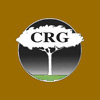DEAR COLLEAGUE:
This Internet publication (www.telangiectasias.com)
has been created in order to answer the questions
that Three-dimensional Regenerative Ambulatory
Phlebotherapy (T.R.A.P.) has raised, and continues
to raise, among colleagues. It is our intention to
establish a “Forum” on this cure for venous
insufficiency, which came into being after many
years of experimentation and after a thorough
critical reassessment of almost all the
phlebological literature published worldwide. First
of all, I wish to thank the pioneers of the Internet
for providing me with such an effective and potent
means of communicating my ideas, which challenge the
traditional concepts of phlebology. The Internet was
not, however, my first choice; initially, my papers
were sent to the most prestigious phlebology
journals, namely Phlébologie and Dermatologic
Surgery, this latter being the official publication
of the American College of Phlebology. Both refused
to publish. Phlébologie would not even review the
work, on the grounds that the documentation was
insufficient (six years of experimentation and 300
patients treated!). The American College of
Phlebology rejected my paper after two reviews. The
referees involved in the first review showed some
initial enthusiasm for the new concepts expressed
and asked me to answer some 31 questions, which I
did. The paper was then rejected on grounds that it
was too long (18 pages). Subsequently, in order to
test the good faith of the journal, I sent in a much
more concise version which was similar to the one
later published by the Union Internationale de
Phlébologie 2005:
From Sclerotherapy and Ablative Surgery to
Three-Dimensional Regenerative Phlebotherapy (T.R.A.P.)
However, this shorter version was also rejected by
the American journal. The reasons for rejection,
together with my rebuttals can be read in:
American College of Phlebology second revision.
My technique had already been fiercely attacked by
some Italian schools of phlebology, particularly
that of musse. At the same time, those practitioners
who could have adopted the method, and thereby
achieved results that no other method yields,
evinced a certain reluctance; this was partly due to
their unjustified psychological submissiveness
towards the “official” phlebologists, and partly
because this technique requires skills that many do
not possess. Given that I have neither the time nor
the inclination to “do the rounds” of congresses in
order to teach T.R.A.P., and in view of the mental
inflexibility manifested by many in the phlebology
establishment, I decided to create this web-site in
order to answer colleagues’ questions concerning
regenerative phlebotherapy. Clearly, this new means
of communication has considerably reduced the power
of the journals and of the various lobbies. Indeed,
the impact of the Internet now exceeds that of any
journal. This development can only be welcomed by
those who possess a spirit of innovation, and who
are well aware of the quality of most of the papers
that appear in the journals.
It is my firm conviction that the traditional tenets
of phlebology need to be systematically re-appraised
and, in many cases, simply overthrown. This
web-site, which is open to all free of charge, is
designed to provide colleagues with the opportunity
to air their views, to exchange opinions and to
raise any questions that they may have. It is an
Internet publication and, as such, must be seen as
continually evolving. Naturally, my chief commitment
lies in preventing venous insufficiency and curing
varicose disorders. This objective can be fully
achieved only by restoring efficient venous function,
which is what T.R.A.P. does in addition to obtaining
an aesthetic result. In this regard, it should be
pointed out that venous insufficiency is an
extremely common disorder and that the current
treatment (ablative and obliterative) of varicose
veins is, in my view, erroneous. Colleagues who are
unwilling to examine critically their own ideas, as
well as mine, are recommended not to access this
web-site.
In order to answer my colleagues’ questions, I will
have to reduce the amount of time spent on
developing and publicising other techniques that my
group has created, and which are undoubtedly more
gratifying from the standpoint of scientific
acknowledgement. Moreover, I am well aware that
destroying deeply-rooted concepts is no way to make
friends. Nevertheless, it must be realised that, in
order to construct something new, we have to destroy
something old.
Today, T.R.A.P. is able to cure, simply and without
risk, any venous pathology of the lower limbs. The
truth of this assertion can easily be verified by
anyone who takes the trouble to do so. In scientific
publications, in congresses and during courses, very
rarely are post-treatment results shown alongside
pre-treatment images. And yet, the efficacy of any
treatment can only be judged on the results it
achieves. For this reason, the results of T.R.A.P.
will be made available on this web-site. Any
colleagues wishing to publicise their own results on
this site are welcome to do so.
Three-dimensional regenerative ambulatory
phlebotherapy (T.R.A.P.). The lower limb is
subdivided into three regions: medial, posterior and
lateral. With the aid of transillumination, 6%
sodium salicylate in an alkaline hydroglycerin
solution (to which 1 ml of 1% lidocaine chlorhydrate
has been added inside a 3 ml vial) is injected
systematically into all the veins, venules and
telangiectasias visible in the medial region,
beginning at the foot and working upwards. These
vessels constitute ‘gateways’ through which the
underlying vessels are ‘regenerated’. A week later,
the posterior region is treated, followed, in the
third week, by the lateral region. In the fourth
treatment session, the cycle begins again, in the
same limb, and continues until all the vessels have
disappeared from sight and/or proper functioning has
been re-established. Subsequently, the contralateral
limb is treated. During each session, between 12 and
36 ml of solution is injected into the superficial
and perforating circulation.

|
From sclerotherapy and ablative surgery to three-dimensional regenerative ambulatory phlebotherapy (T.R.A.P.)
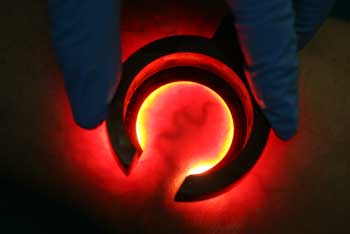
Transillumination shows up superficial
ectatic vessels that are not visible to the
naked eye
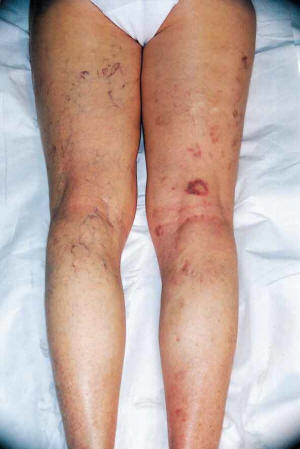
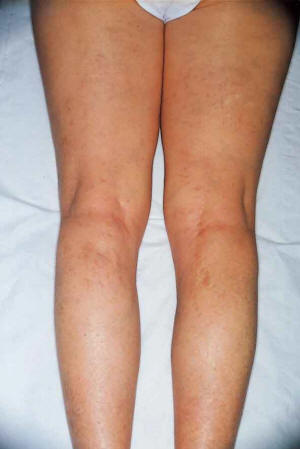
Treatment of the superficial
and perforating circulation, which is carried
out by injecting a non-obliterating,
regenerating solution into all the vessels
visible to the naked eye or by means of
transillumination
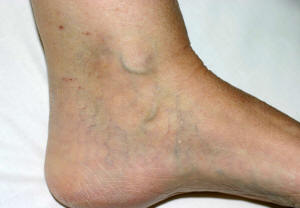
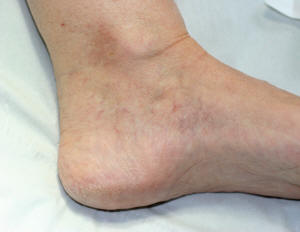
Phlebectatic corona
|

